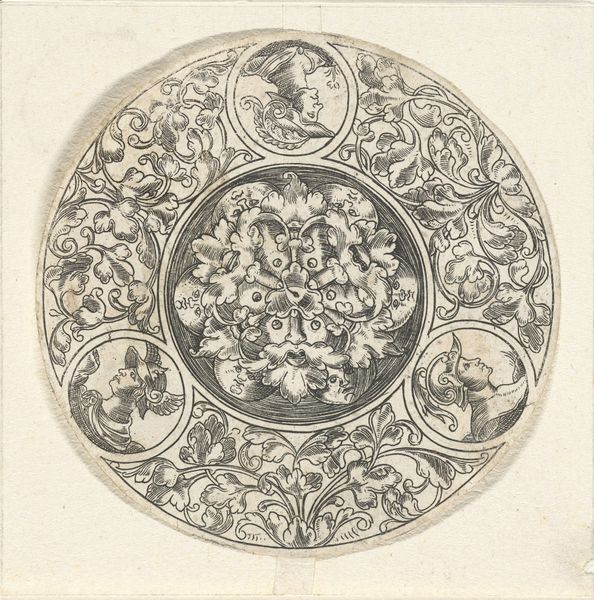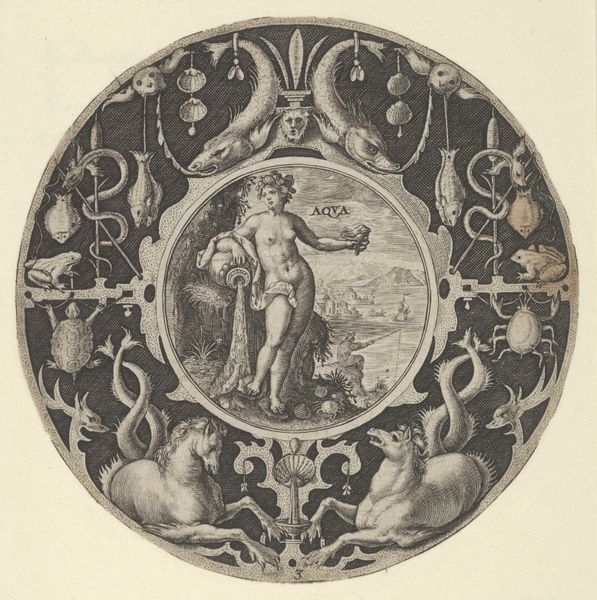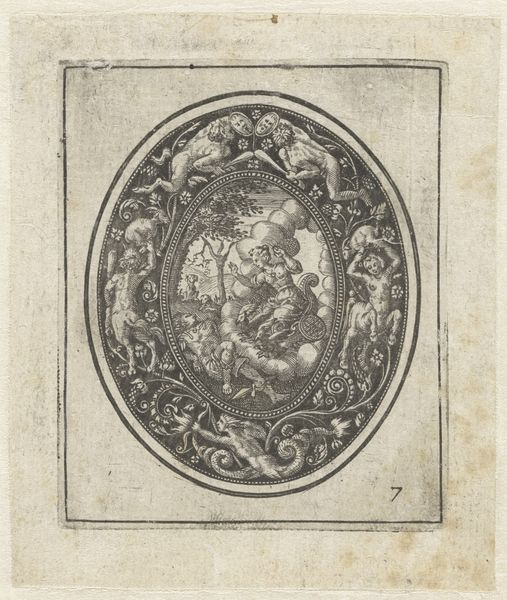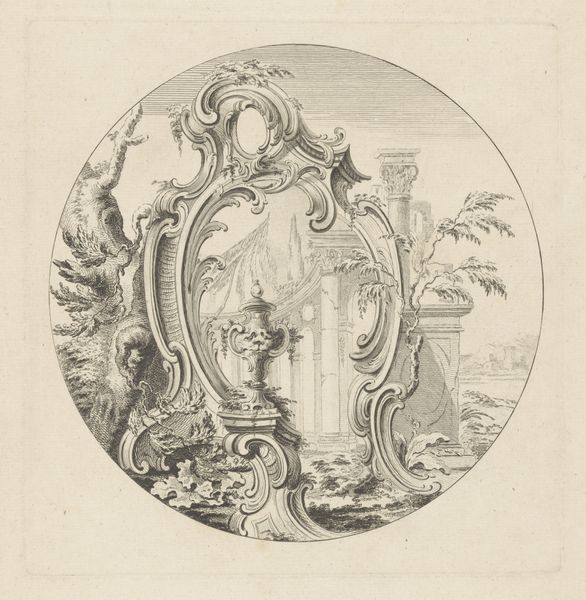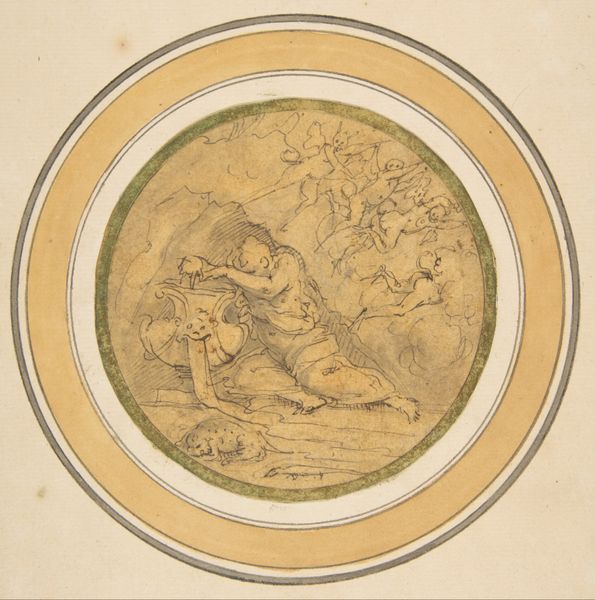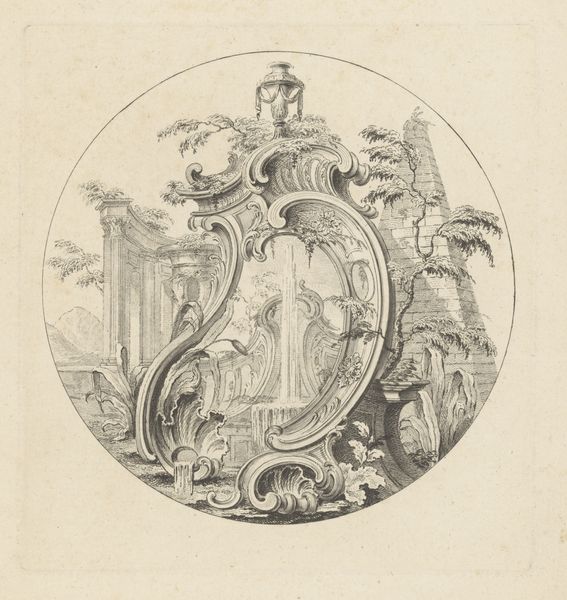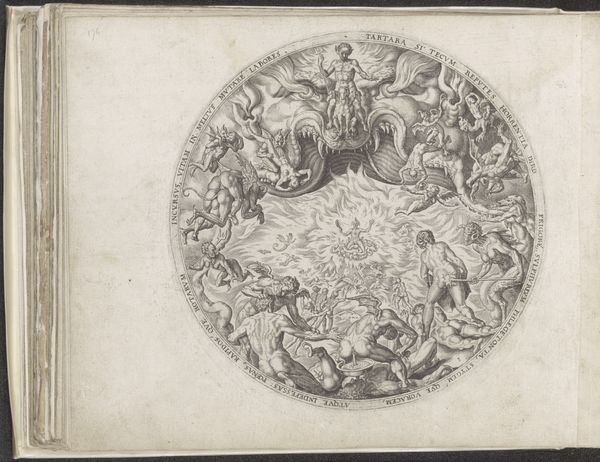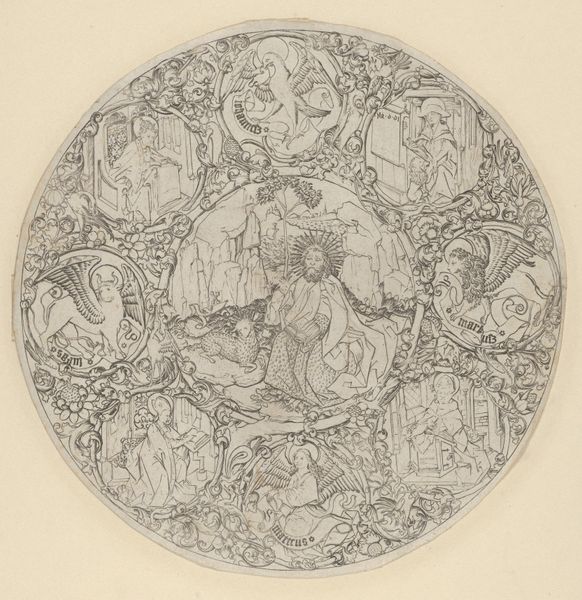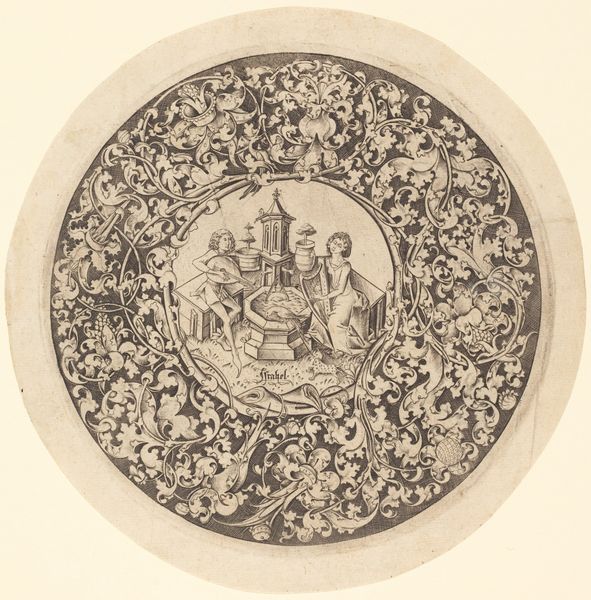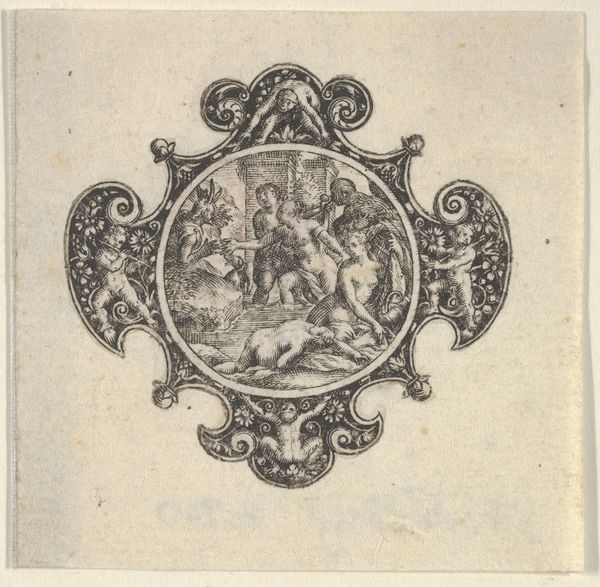
print, engraving
#
animal
# print
#
old engraving style
#
figuration
#
11_renaissance
#
northern-renaissance
#
engraving
Copyright: Rijks Museum: Open Domain
Curator: Oh, fascinating. It’s giving me a whimsical feeling. Editor: Agreed. And looking at this round print, “Rond blad met beer die de doedelzak bespeelt," roughly translated as "Round Sheet with Bear Playing the Bagpipes," made around 1534 by Monogrammist CG, the immediate draw for me is the starkness and fineness of the engraving. The material simplicity against the dense detail...it’s really arresting. Curator: I immediately start wondering about the bear, of course. Why a bear, and what statement is the artist making? Given the period, is this a commentary on class or social hierarchy, with the bear acting as a satirical figure of someone in power? I'm drawn to considering what a bear means as a symbol, especially when animated with something inherently human—playing an instrument, and even, by extension, creating culture. Editor: Precisely, and I think attending to the materiality supports that reading. The engraving technique itself— the laborious process of etching into the metal, the multiple stages of production—suggests a deliberate investment in accessible imagery with potentially subversive undertones. Curator: Look at the border with the various headshots of, presumably, leaders, aristocrats, or royalty. They each occupy such small spaces, but together, along with all of that decorative, ornate flower work, they circle that central bear figure. Is there perhaps commentary there regarding the idea of a figure’s inherent connection to both nature and civilization? And, what were the printmaker’s class origins? What access to formal or informal training did they possess? These questions matter immensely. Editor: I concur completely. How the print would be disseminated, who would purchase or see it, how much labor would be extracted to continue to support the artist–the act of reproduction becomes a very telling action that we need to unpack. The very making of such items speaks directly to the societal consumption. The fine details would suggest maybe that it's for people with a modicum amount of wealth in comparison to commoners. Curator: Ultimately, this speaks volumes about art's historical ability to challenge social norms through animal allegory. Editor: I completely agree, and examining the work through this lens has significantly enriched our understanding. It underlines the connection between the art, labor, and the society in which they circulated.
Comments
No comments
Be the first to comment and join the conversation on the ultimate creative platform.

